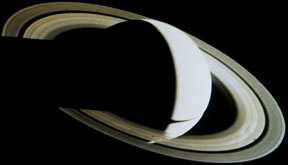This image of Saturn and its rings was taken by Voyager 1 in 1980.
Click on image for full size
Courtesy of NASA
Saturn's Rings
Have you ever seen a picture of Saturn's rings? If you have ever seen a picture of Saturn, it's likely you saw its rings too! The rings are very pretty and many colors. They circle around the middle of the planet.
The rings are made of chunks of ice and rock. They come in many different sizes and shapes. The rings are very thin sheets, and there are lots of them! Light from the Sun shines on the ice, giving the rings their color.
Scientist found a huge new "ring" in 2009. The Phoebe Ring is about 100 times bigger than the main ring system. Scientists think the ice and dust in the ring comes from the strange moon Phoebe.
You might also be interested in:
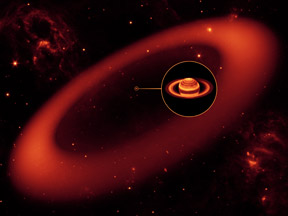
The Phoebe Ring is one of the rings around the planet Saturn. The Phoebe Ring is much bigger than Saturn's other rings. It is about 100 times larger than the main ring system. The ring was discovered by
...more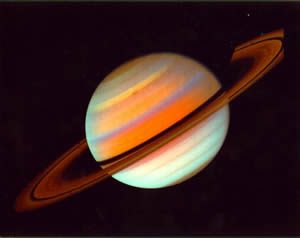
Saturn is the second largest planet in our solar system. It is also very bright in the sky. The ancient Greeks named the planet after the god of farming and time. The rings of Saturn were first seen by
...more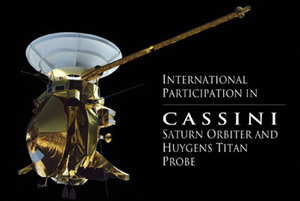
Cassini is the name of a robot spacecraft. Cassini is studying the planet Saturn. It is also studying many of Saturn's moons and Saturn's cool rings. Cassini blasted off from Earth in 1997. It took Cassini
...more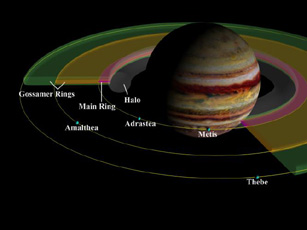
You may think Saturn is the only planet with rings. It is not! Jupiter has rings, too. They aren't as easy to see as Saturn's, but they are there! Saturns rings are made of ice and are very bright. Jupiter's
...more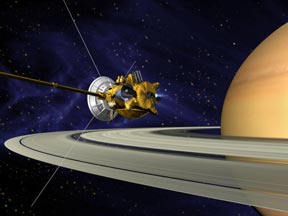
A robot spaceship is about to get to Saturn. The spaceship is named Cassini. Cassini is moving fast because it had a long way to travel to get to Saturn. Cassini will fire its rocket engine for 96 minutes
...more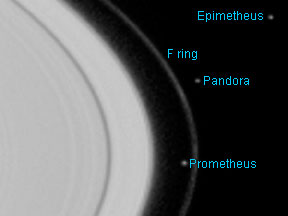
Pandora is a small moon of Saturn. It was discovered by S. Collins and others in 1980 from photos taken by the Voyager 1 spacecraft. Pandora's name comes from Greek mythology. Pandora was the first woman,
...more
Prometheus is a small moon of Saturn. It was discovered by S. Collins and others in 1980 from photos taken by the Voyager 1 spacecraft. This moon's name comes from Greek mythology. Prometheus was a Titan
...more


